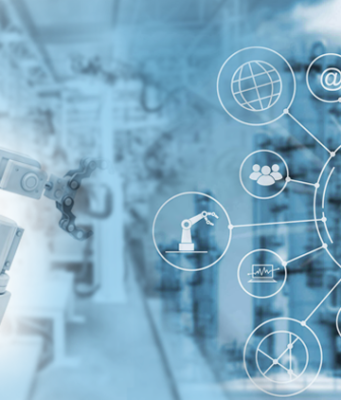RPA has emerged as one of the leading process streamlining technologies in today’s market. RPA experts claim to foresee RPA integration in cross-industry.
Why Industries Require RPA?
Industries require a system that streamlines and accelerate the process of management. In the present time, almost every business vertical has BPM (Business Process Management) and ERP (Enterprise Resource Planning) systems integrated to achieve the required streamlining of core systems and processes. BPM and ERP were available as the most comprehensive solution, but with flaws. BPM integration calls for the replacement of core processes and systems which results in a costly effort with multi-layer, highly disruptive implementation process. Unsurprisingly, BPM failed to deliver the planned ROI.
With the steady rise of RPA, BPM is no longer the only solution available for automation. The more we perceive digital figures and trends, the more we see RPA and Artificial Intelligence behind it as the true driver of automation in the different business sector.
Why RPA?
With current enterprise software, employees spend countless hours, daily, on routine and enervating tasks like customer order processing, data transfer, call center operation, payroll processing, etc. RPA as a software tool holds potential to automate the process that how routine work gets done in just about every industry and across departments, from finance to HR to IT operations.
What is RPA?
RPA stands for robotic process automation and replaces repetitive work with software. RPA software covers broad use of software with artificial intelligence (AI) and machine learning capabilities that enable it to automate other software — that entirely replace the manual, routine and often error-prone digital processing jobs still performed by humans at many enterprises.
Let’s look into one of the use-cases of customer service and support desks. This particular business segment uses a number of different systems and applications. Additionally, employees perform a number of high volume of low complexity repetitive tasks. When a user calls to a service center, a service agent has to navigate different applications simultaneously regulating their cooperation on the call with the customer. RPA with AI ensures cognitive or intelligent automation.
If a user contact to service agent via email or messaging systems, service agent require to search a different piece of information from the different application and translate it into information for executing required actions. But having to jump back and forth between systems and screen shifts is inaccurate and increase the service time. In a live call, focus shift from the caller is a common occurrence.
As a user who has not experienced being asked the same identity verification questions multiple times by the same call center? Apart from this, post-call follow up, such as updating records and recordings manually take almost as much time as the call itself, that leads to negatively impacting upon agent productivity.
Finding The Right RPA Target
RPA with artificial intelligence and machine learning capabilities is available as a substitute and sometimes a stopgap solution for significant systems integration work. As Gartner’s Cathy Tornbohm said, considering key questions for robotic process automation technology in different business vertical and around is essential:
- Four questions for evaluating RPA
- How efficient are your processes?
- How effective are your processes?
- What other general technologies or business options are available to process this activity?
These questions are necessary to give thought upon for RPA adoption. As the chart depicts, enterprise RPA adoption is not a trend for big organizations but has a higher potential for industry-specific processes in almost every leading businesses of today.
Do We Understand This Wave?
If we believe in Deloitte Global RPA Survey, RPA becomes one of the key ways of AI implementation. Other key findings of the survey include:
53% of respondents have already begun their RPA journey. The adoption can be increased to 72% in the next two years.
RPA remain to meet and exceed expectations across multiple dimensions while fostering improved compliance (92%), improved quality/accuracy (90%), improved productivity (86%), cost reduction (59%).
78% of those who have already shifted to RPA expect to invest more in RPA over the next three years significantly.
Robotic process automation is the future of enterprises for automation, but before adopting it, enterprises should discuss use-cases with a potential vendor to capture value from this breakthrough technology.


